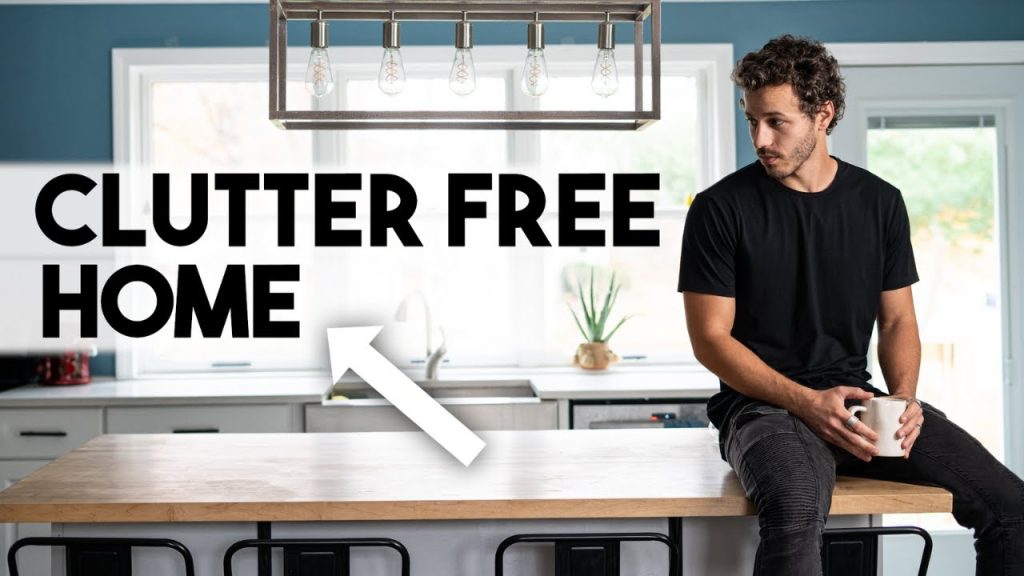Once the hoarding cleanup process is complete, the work is far from over. Maintaining a clutter-free home requires ongoing effort, self-awareness, and the development of new habits. The challenge is not just about getting rid of accumulated items, but also preventing the cycle of hoarding from starting again.
Post-cleanup care is essential for sustaining a clean, organized, and functional living space. In this article, we will discuss practical tips for maintaining a clutter-free home, ensuring that the efforts put into the cleanup process lead to long-term positive changes.
1. Develop New Organizational Systems
One of the key steps in maintaining a clutter-free home is creating a sustainable organizational system. Without an effective system in place, it is easy for clutter to build up again. Organizing the items that remain after the cleanup is essential for maintaining order and preventing future hoarding.
Here are a few tips for creating an effective organizational system:
- Categorize Items: Group similar items together (e.g., books, kitchen tools, clothing) to make it easier to find what you need and keep things in their proper place.
- Use Storage Solutions: Invest in storage bins, shelves, and other tools that help keep items organized and out of sight. This will prevent piles of clutter from forming in open spaces.
- Label Storage Containers: Clearly label storage boxes or bins to make it easier to access and organize items without having to dig through them.
- Create Dedicated Spaces: Designate specific areas for important items like paperwork, keys, or electronics, so they always have a home and don’t end up scattered around the house.
By taking time to set up a system that works for your lifestyle, you will find it easier to maintain an organized home and prevent the accumulation of unnecessary items.
2. Set Boundaries for New Purchases
One of the biggest challenges after hoarding cleanup is avoiding the accumulation of new items. To prevent clutter from building up again, it’s essential to set clear boundaries for new purchases.
Here are some strategies for limiting new items:
- Be Mindful of Impulse Purchases: Before buying something new, ask yourself if you truly need it. Consider if it adds value to your life or if it will just take up space.
- Limit Shopping Trips: Reduce the temptation to accumulate unnecessary items by limiting your shopping trips. If you don’t need something immediately, wait to buy it later.
- Create a “One-In, One-Out” Rule: For every new item you bring into the home, make sure to discard or donate something else. This will help keep your possessions in check and prevent new clutter from building up.
- Set Spending Limits: Keep a budget for personal purchases and avoid purchasing items that are not essential. By being conscious of your spending, you can prevent the accumulation of unnecessary goods.
Setting and maintaining these boundaries will help you avoid falling back into old hoarding habits.
3. Create a Regular Cleaning and Decluttering Routine
A consistent cleaning and decluttering routine is vital to maintaining a clutter-free home. While deep cleaning may have been done during the hoarding cleanup process, regular maintenance is necessary to keep things organized and tidy.
Here’s how to establish an effective routine:
- Daily Quick Cleanups: Spend 10 to 15 minutes each day picking up stray items and wiping down surfaces. This will prevent clutter from accumulating and keep your home feeling clean.
- Weekly Decluttering Sessions: Dedicate time each week to go through any new items that may have accumulated and determine if they need to be kept, discarded, or donated. Regularly sorting through your possessions will help you stay on top of clutter.
- Seasonal Cleaning: Schedule a more thorough cleaning session every few months. This includes organizing closets, checking for items you no longer use, and doing a deep cleaning of hard-to-reach areas.
By establishing a routine that includes daily, weekly, and seasonal tasks, you can prevent clutter from building up and maintain a clean and organized living space.
4. Seek Ongoing Support and Accountability
The journey toward maintaining a clutter-free home is often easier with ongoing support and accountability. Whether you are recovering from hoarding tendencies or simply want to keep your home organized, having a support system can provide motivation and encouragement.
Here are some ways to stay accountable:
- Work with a Professional Organizer: Periodically consult a professional organizer who can help you maintain organization and offer guidance on areas that may need improvement.
- Join a Support Group: Many communities have support groups for individuals who have dealt with hoarding or disorganization. Joining a group provides a sense of camaraderie and the opportunity to share experiences and tips with others who understand the challenges.
- Ask for Help from Family or Friends: If you’re finding it difficult to keep up with the organizing, ask a trusted friend or family member to help with regular check-ins. They can support you in maintaining your home and provide a fresh perspective when things start to slip.
- Accountability Apps: There are apps designed to help with organization and accountability. These apps can send reminders to declutter, track progress, and give tips on maintaining a tidy home.
Having a support system in place ensures that you have someone to turn to for advice, motivation, or just to hold you accountable for staying organized.
5. Address Emotional Attachment to Possessions
For many individuals, hoarding is tied to emotional attachment to possessions, making it difficult to part with items. After a hoarding cleanup, it is important to continue addressing this emotional connection to items and develop healthier ways of coping.
Here are a few tips:
- Therapy or Counseling: Continuing therapy or counseling after the cleanup process can help individuals address the emotional reasons behind their attachment to possessions. Cognitive-behavioral therapy (CBT) is often used to help individuals challenge the beliefs that drive hoarding behavior.
- Mindfulness and Reflection: Regular mindfulness exercises can help individuals stay grounded and present. Reflecting on the reasons behind the attachment to certain items can provide clarity and reduce emotional stress.
- Gratitude Practices: Focusing on gratitude for what you have can help shift the mindset from acquiring more possessions to appreciating what you already have. This change in perspective can reduce the urge to accumulate unnecessary items.
By continuing to work on emotional attachment to possessions, individuals can create a healthier relationship with their belongings and reduce the likelihood of falling back into hoarding behavior.
6. Be Patient with Yourself
The process of maintaining a clutter-free home takes time and effort. It’s important to be patient with yourself and recognize that the transition from hoarding to a clutter-free lifestyle is a gradual process. Setbacks are normal, and there may be days when things feel overwhelming. The key is to remain consistent with your routine and seek support when needed.
Celebrate small successes along the way, whether it’s keeping the space organized for a week or successfully resisting the urge to accumulate new items. Acknowledge your progress, and remember that creating and maintaining a clutter-free home is a continuous journey.
Conclusion
Maintaining a clutter-free home after hoarding cleanup is a long-term commitment, but it is achievable with the right tools, habits, and support. By developing an organizational system, setting boundaries for new purchases, establishing a cleaning routine, seeking ongoing support, and addressing emotional attachments to possessions, individuals can keep their home organized and clutter-free for the long run.
With patience and dedication, you can maintain the positive changes made during the hoarding cleanup process, creating a living space that is functional, safe, and conducive to personal growth and well-being.
Ready to keep your home organized and clutter-free? Follow these easy tips to maintain a tidy living space every day!









